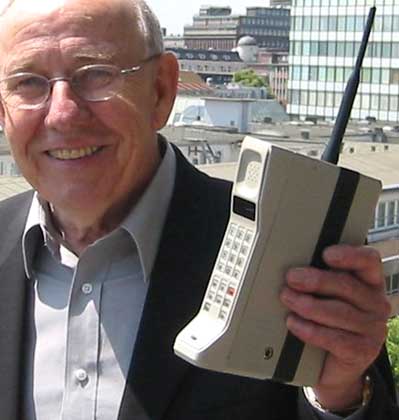It sounds great for 2020 but people of 2030 are likely to want that, plus enhanced spectral/energy/cost efficiency, better intelligence level, and security - all over the world.
For that, they will need 6G air interface and transmission technologies and novel network architecture, such as waveform design, multiple access, channel coding schemes, multi-antenna technologies, network slicing, cell-free architecture, and cloud/fog/edge computing.

We've come al long way from the DynaTAC 8000X from less than 40 years ago. Imagine if environmental activists and their political allies had not scuttled nuclear energy in America and scientists and engineers had been allowed to do the same thing there. We wouldn't have defunct legacy efforts like solar panels and wind as the best 'green' energy available, we'd have affordable energy without the environmental impact of government-subsidized failures. Image: DynaTac video by Motorola.
6G will have four new features:
First, to satisfy the requirement of global coverage, 6G will not be limited to terrestrial communication networks, which will need to be complemented with non-terrestrial networks such as satellite and unmanned aerial vehicle (UAV) communication networks, thus achieving a space-airground-sea integrated communication network.
Second, all spectra will be fully explored to further increase data rates and connection density, including the sub-6 GHz, millimeter wave (mmWave), terahertz (THz), and optical frequency bands.
Third, facing the big datasets generated by the use of extremely heterogeneous networks, diverse communication scenarios, large numbers of antennas, wide bandwidths, and new service requirements, 6G networks will enable a new range of smart applications with the aid of artificial intelligence (AI) and big data technologies.
Fourth, network security will be strengthened when developing 6G networks.
A recent overview article provides a comprehensive survey of recent advances and future trends in these four aspects. Clearly, 6G with additional technical requirements beyond those of 5G will enable faster and further communications to the extent that the boundary between physical and cyber worlds disappears.





Comments